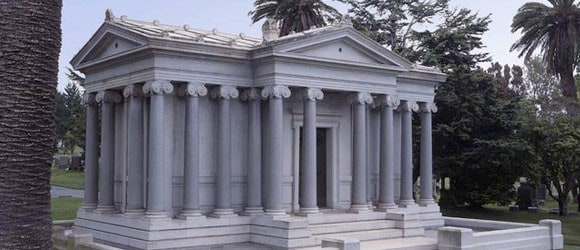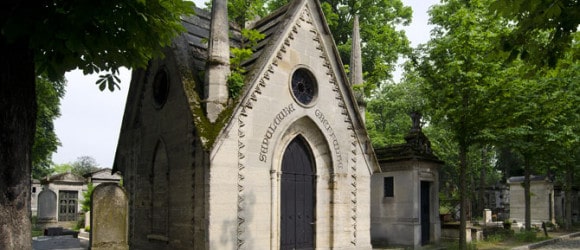The Human Cost of Early Mausolea
- At August 13, 2015
- By mausoleum
- In Mausoleum Design
 0
0
A story came to light earlier this week of a massive find of more than 10,000 skeletons in what is being called the “criminal tombs”, dating back to about 202 BC, during the Chinese Han Dynasty. The name given this macabre find refers to the fact that many of the skeletal remains are bound by shackles and fetters.
As explained at this week’s Symposium for Research on Hanyang Mausoleum and Han Culture, the many remains were of prisoners who had been forced to build the Hanyang Mausoleum, and the tomb where Hanjingdi Liu Qi (188 – 141 DC), the fourth emperor of the Western Han Dynasty, and his wife are buried. There had been reports of an archaeological find of many prisoners as far back as 1972, but that excavation was more than a mile from this most recent discovery.
Read More»The Cemetery Mausoleum
A cemetery mausoleum offers an appealing opportunity to inter beloved family members above ground. Beautiful cemetery mausoleums draw admiration and appreciation from family members and strangers alike, and provide a permanent monument to the love and devotion that family members feel toward the deceased.
Read More»The Birth of the Modern Family Mausoleum
- At March 17, 2013
- By Doug Keister
- In Doug Keister's Blog
 0
0
Although the birth of the mausoleum dates to the Tomb of Mausolus in Halicarnassus (now Bodrum, Turkey) constructed circa 353 BC, it wasn’t until the early 19th Century that the modern family mausoleum was established as an enduring funerary form. The first family mausoleum was erected in Père-Lachaise Cemetery in Paris, France. Père-Lachaise was established in 1804 as a result of a burial crisis in Paris. Prior to the establishment of Père-Lachaise most people in Paris were unceremoniously buried in city cemeteries and churchyards, but after centuries of burials the cemeteries became over crowded. Père-Lachaise was laid out as a bucolic environment and looked more like a park than a burial ground. More importantly, Père-Lachaise and other cemeteries that used it as a template became a canvas for monuments and mausoleums.
Read More»The Benefits of Using Granite for Your Custom Mausoleum
- At February 08, 2013
- By Dachary Carey
- In Mausoleum Design
 0
0
Custom mausoleums give families the opportunity to memorialize their deceased in whatever manner they choose. A custom granite mausoleum gives the peace of mind of building a lasting monument, and the flexibility to create a truly unique memorial for beloved family members. Granite’s beauty, versatility, strength, and durability make it one of the most popular materials for funerary needs, and a perfect choice for a custom mausoleum.
Read More»Stained Glass for Mausoleums
- At March 22, 2013
- By Doug Keister
- In Doug Keister's Blog
 0
0
When I travel to cemeteries, I often hear from managers, “We have some great Tiffany windows in our private mausoleums as well as in our community mausoleums.” I’m often tempted to tell them that I doubt that, but I usually hold my comments. Why don’t I think they have some great Tiffany windows? Simply put, Tiffany windows are relatively rare in mausoleums. Truth-be-told, I have seen some spectacular Tiffany windows in private mausoleums (many worth upwards of one million dollars), but, again, they are not commonplace.
Read More»




